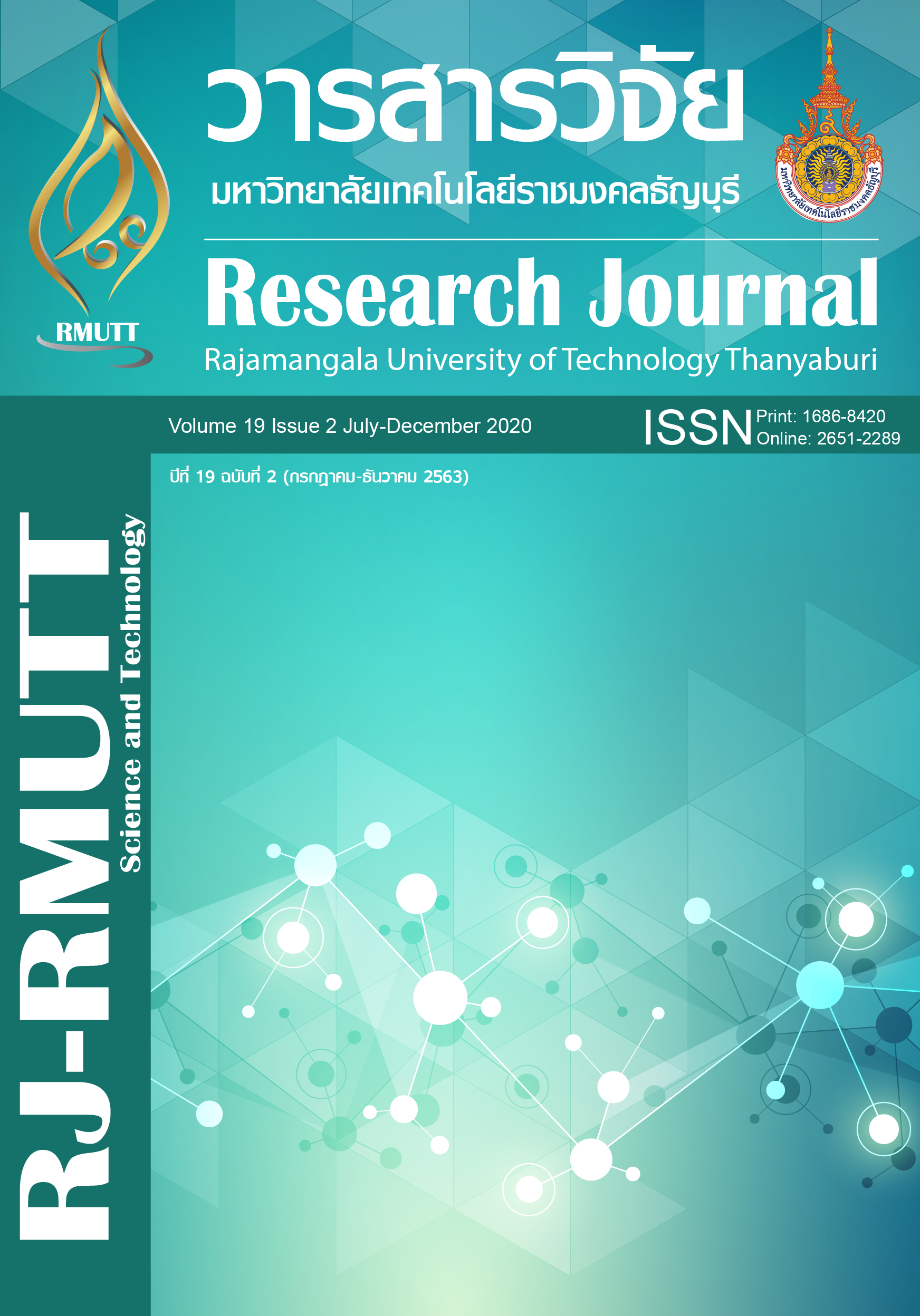Temperature Control in Soil for the Growth of Chrysanthemum Sprout
Main Article Content
Abstract
This research was to study the soil temperature for chrysanthemum sprout cultivation. The size of the solar radiation panel to make hot water was 55220 cm2. The soil container was 1 m2.
It contained 10 cm tall for seedling soil. The temperature measurement of the first soil layer temperature was attached to the heating plate below. The second layer would be higher than the first 5 cm and the third layer was higher than the heating unit 10 cm. From the experiment, heating the soil was operated by controlling the water temperature in the tank constant 70, 60, 50, and 40°C. It was found that soil layer 1 had an average temperature of 56, 50.7, 48 and 41°C, respectively. Soil layer 2 had an average temperature of 44, 41.2, 39 and 35.5°C, respectively, and soil layer 3 had an average temperature of 37, 37, 34 and 32.2°C, respectively. In the case of not controlling the water temperature from making hot water during the day, which solar energy was utilized to bring hot water to use at night by changing the water temperature of 60 and 40°C, it was found that the soil layer 1 had an average temperature of 42 and 35°C respectively. Soil layer 2 had an average temperature of 34 and 29°C respectively, and soil layer 3 had a constant average temperature of 28°C. Water temperature 40 - 70°C was used as a heat source transferring heat to the soil where chrysanthemum sprout was cultivated with an area of 1 m2, depth 10 cm as required, even if the water temperature was not maintained at night; the water temperature naturally decreased.
Article Details

This work is licensed under a Creative Commons Attribution-NonCommercial-NoDerivatives 4.0 International License.
References
Krasaechai A. Chrysanthemum. 1st ed. Bangkok: Odean Store; 1992.
Krutkun T. Sustainable agriculture use of soil fertilizer. Bangkok: Green fence; 1997.
Feungchan S. Fruit tree physiology. 1st ed. Bangkok: Sirakan Offset; 1994.
Scott HD. Soil Physics: Agricultural and Environmental Applications. 1st ed. Library of Congress cut a logging Iowa State; 2001.
Permchart W. A feasibility study of using soil as a waste cooling agent for air conditioners in Thailand [master’s thesis]. Bangkok: King Mongkut's University of Technology Thonburi; 1998.
Gua Y, Asher J, Yano T, Momii K. Estimation of Soil Evaporation Using the Differential Temperature method. Soil Sci Soc Am J. 1999;63(6):1608-14.
Kurpaskaz S, Slipek L. Mathmatical Model of
Heat and Mass Exchange in a Garden Subsoil during Warm air heating. Engngres. 1996;65:305-11.
Boonwan C, Yamfang M, Thepa S, Sukchana T, Pruengam P, Pairintra R, et al. Development of a Mathematical Model to Predict Soil Temperature for the Growth of Chrysanthemum Sprouts. Research Journal Rajamangala University of Technology Thanyaburi. 2020;19(1):74-85.


